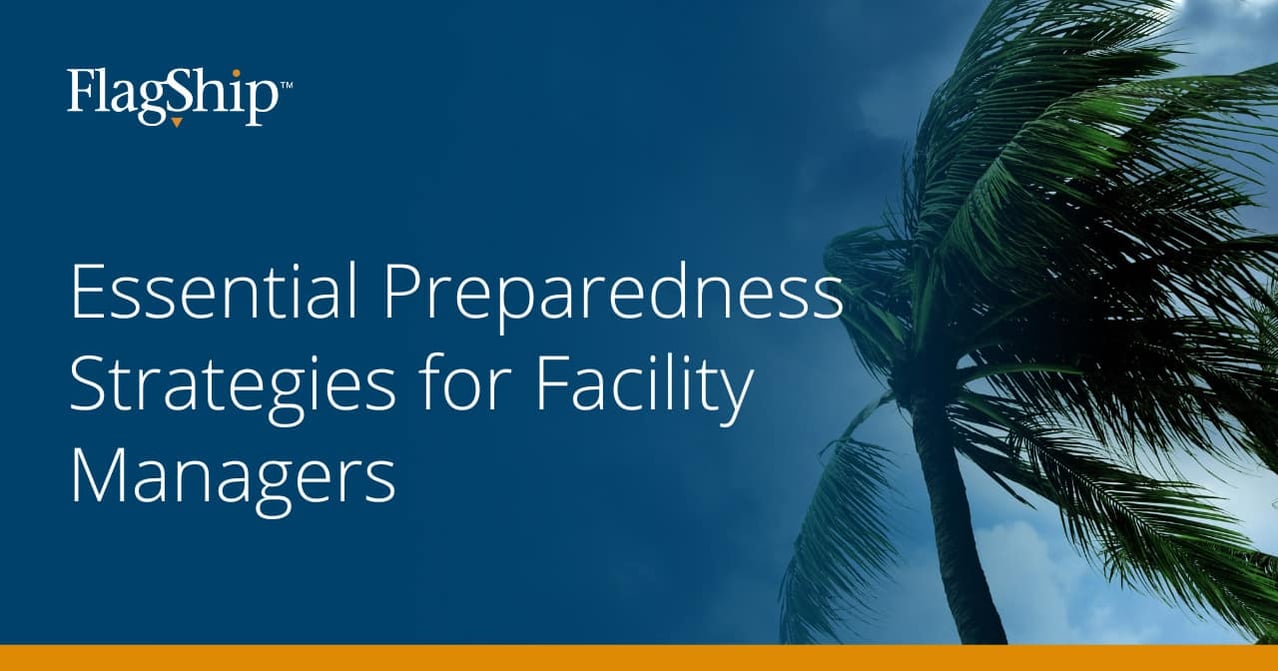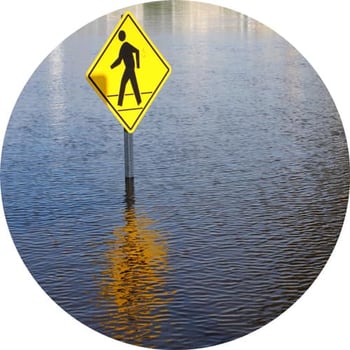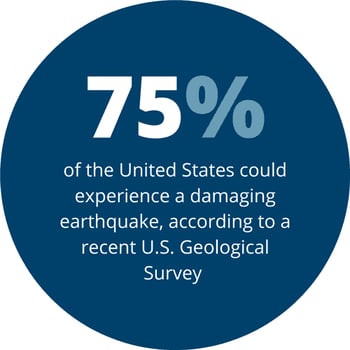
As climate change intensifies and buildings are subject to increasingly extreme weather, facility managers are shouldered with the critical responsibility of ensuring occupant safety and operational continuity during emergencies.
Weather phenomena such as hurricanes, floods, and tornados can be extraordinarily damaging, affecting everything from your building’s structural integrity to occupant wellbeing.
That’s why it’s crucial to address weather-related events in your emergency preparedness plan and customize that plan according to the specific weather risks associated with your geographic location. By tailoring your approach to meet the challenges posed by local weather conditions, you can fortify your facility and protect employees and visitors.
In this blog post, we’ll offer guidance, resources, and best practices for safeguarding your facility from the effects of major weather events.
Preparing for Hurricanes
Hurricanes are powerful and destructive forces of nature, characterized by heavy rain, high winds, and the potential for widespread flooding and storm surges. Areas along coastlines, particularly the Atlantic and Gulf coasts in the United States, are at high risk, especially during hurricane season, which runs from June to November.
There are many ways to prepare your facility for hurricane season, including:
- Inspect structures: Regularly inspect the building and reinforce roofs, windows, and doors to withstand high winds and heavy rains.
- Install protective features: Consider installing storm shutters, impact-resistant glass, and secure doors to protect against flying debris and strong winds.
- Organize emergency supplies: Stockpile essential supplies, including food, water, first aid kits, and emergency equipment such as flashlights and batteries.
- Prepare backup power sources: Ensure the availability of backup generators and test them regularly to guarantee functionality during power outages.
- Secure loose objects: Secure or remove objects that can become projectiles in high winds, both indoors and outdoors.
Managing Flood Risks
Flooding poses a significant threat to businesses, not only by damaging infrastructure but also by contaminating water supplies. Facilities in high-risk flood zones must adhere to stricter building codes and often require additional insurance coverage. 
To safeguard your facility against flooding, you can employ the following strategies:
- Understand flood risk: Review local flood maps and historical data to assess your facility's location and its susceptibility to flooding.
- Flood-proof the facility: Deploy appropriate flood barriers or seals such as sandbags, inflatable barriers, or permanent flood walls based on your facility's specific needs and level of flood risk.
- Elevate critical equipment: Elevate electrical systems, HVAC units, and other critical equipment above potential flood levels.
- Secure outdoor items: Secure items that could potentially float or move in floodwaters to avoid additional damage or hazards.
- Maintain drainage systems: Regularly inspect and maintain gutters, drains, and sump pumps to ensure proper operation during heavy rainfall.
Understanding Tornado Safety
Tornadoes are among the most violent and unpredictable natural disasters, capable of causing extensive damage in a matter of seconds. Characterized by high wind speeds, they can tear through buildings, uproot trees, and hurl debris with devastating force. Often referred to as Tornado Alley, the area of the United States at the highest risk of tornadoes spans the central plains from the Dakotas to Texas.
Facility managers in tornado-prone areas can take several steps to mitigate risk, including:
- Reinforce structures: Strengthen key areas such as roofs, doors, and windows to withstand high winds.
- Prioritize data protection: Back up important documents and digital data to secure, off-site locations or cloud services.
- Create a tornado safety plan: Develop a clear, concise plan that includes evacuation routes, designated shelter areas, and procedures for accounting for all individuals.
- Install early warning systems: Equip the facility with weather alert systems to receive timely tornado warnings.
- Communicate with local authorities: Establish a line of communication with local emergency services for updates and guidance during severe weather events.
Planning for Earthquakes
Earthquakes are sudden and unpredictable natural events that can cause severe structural damage, loss of life, and economic disruptions. These tremors often strike without warning, triggering secondary disasters such as tsunamis, landslides, or fires. High-risk areas are often located along fault lines such as the San Andreas Fault in California.
If you work in a region affected by earthquakes, consider taking the following measures:
- Perform a risk assessment: Understand the earthquake risk in your area by consulting seismic hazard maps and historical data.
- Secure interior and exterior items: Fasten heavy furniture, equipment, and appliances to walls and floors, and secure items that might fall or become projectiles.
- Conduct employee training and drills: Conduct regular earthquake drills and training sessions to ensure that all employees know how to respond quickly and safely when an earthquake occurs.
- Install communication systems: Establish reliable communication systems to disseminate information and instructions effectively during and after an earthquake.
- Ensure utility safety: Know how to shut off gas, water, and electricity to prevent fires and flooding resulting from damaged lines.
Responding to Wildfires
Wildfires are fast-moving and often devastating events, known for spreading rapidly and consuming everything in their path. These fires are particularly prevalent in areas with dry climates, abundant vegetation, and strong winds such as the western United States. Wildfires not only pose a direct threat to life and property but also create hazardous air quality conditions and long-term environmental damage.
Here's a comprehensive list of steps you can take to mitigate the risk of fire to your facility:
- Create defensible space: Clear the area around the facility of dry vegetation, debris, and other flammable materials to create a buffer zone that can slow the spread of fire.
- Use fire-resistant materials: When possible, use fire-resistant materials for roofing, siding, and landscaping to enhance the facility's resilience against wildfires.
- Implement evacuation procedures: Establish clear and efficient evacuation procedures to ensure a swift and safe exit from the facility if a wildfire approaches.
- Install sprinkler systems: Ensure that your facility is equipped with a functioning sprinkler system and that water sources are accessible.
- Stay informed and communicate: Maintain a line of communication with local fire departments and emergency services, and keep staff informed about the status of wildfires and safety measures.
Remember – Weather preparedness is an ongoing commitment, requiring continuous adaptation to the changing dynamics of nature. By staying informed, vigilant, and proactive, you can ensure that your facilities remain safe and stable havens against the unpredictability of extreme weather events.
For more information about emergency preparedness, visit Flagship’s resources page.





Leave a Comment